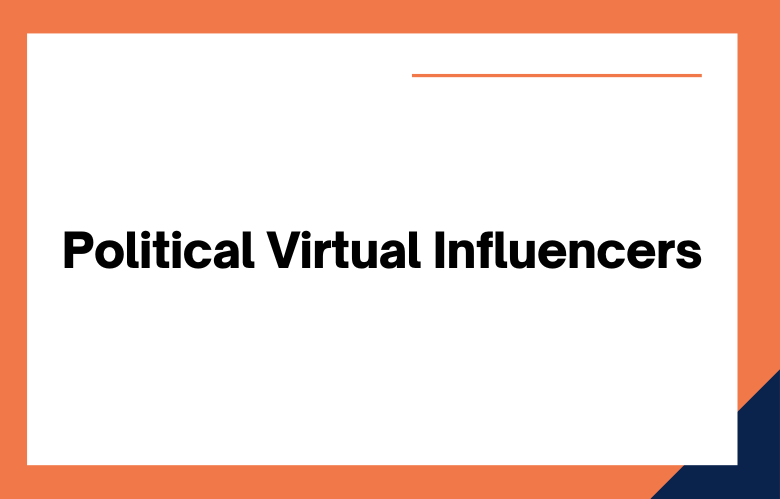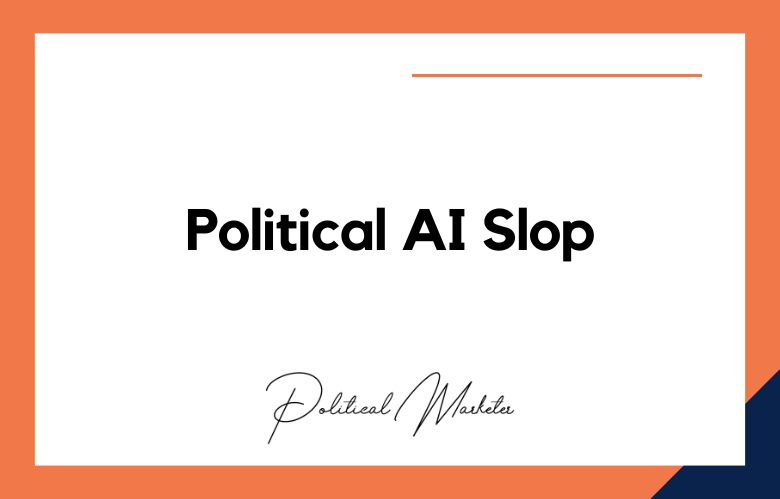Political Virtual Influencers, or PVIs, are the future wave in political marketing. They are a relatively new and untested concept. Still, they have already shown to be very effective in generating excitement and engagement for a campaign and getting out the vote.
Simply put, it is an online persona created by a campaign to promote their candidate or issue. PVIs can be used to engage with potential voters on social media or even create content (articles, videos, etc.). With the election only months away, now is the time for campaigns to start looking into using PVIs to help them win!
Technology has been booming since the days of Abraham Lincoln campaigning on horseback.
Political marketing has evolved, and today’s campaigns use every tool to reach voters.
Increasingly, that includes virtual influencers—people with large social media followings who persuade others to promote a candidate or issue. As the role of virtual influencers in politics grows, so does the potential for savvy campaign marketers to harness their power.
Here’s what you need to know about this new frontier in political campaigning.
What are Political Virtual Influencers?
Virtual influencers are digital avatars that promote products, services, or causes. Political virtual influencers are digital avatars encouraging political products, services, or causes.
- Politicians have long used artificially created a persona to influence public opinion.
- In the digital age, some politicians use virtual influencers – computer-generated personas with their social media accounts to reach voters.
- These computer-generated characters appeal to specific demographics and respond to voter concerns in a way that honest politicians may be unable to.
- Some people are critical of this practice, arguing that it leads to voters being manipulated by false information or inundated with campaign propaganda.
- Others believe this is a new and innovative way for politicians to connect with voters.
- Political Virtual Influencers are a new way of using social media to communicate with populations.
- They are realistic 3D computer-generated humans who promote a brand’s message or candidate.
- They exist purely in the digital world, and their success rates have grown exponentially.
- PVI targets specific demographics and pinpoints microcosms within society
- PVIs are becoming more widespread and accepted as they prove themselves over time.
Virtual Influencers (VIs) are computer-generated characters influencing public opinion on political issues. VIs are programmed to react and engage with users in ways that persuade or change their beliefs. It targets specific demographics with customized messages.
Political VI’s are a relatively new phenomenon, and their use is controversial. Some people believe that VIs can profoundly impact the political landscape, while others worry about their potential to manipulate public opinion.
The Future of Political Campaign Marketing Using Virtual Influencers
Virtual influencers may decide elections. These virtual influencers could direct the attention of thousands or even millions of registered voters to the campaign issue of their choice. The influence of these virtual influencers could be powerful because voters would believe that these virtual influencers were ordinary people supporting their position.
People will create “Political Virtual Influencers” with robust, attractive features and characteristics. Viewers might want to either learn from the Influencers or participate in the activities in which the Influencers are involved.
Politicians will be practical by creating political messages that inspire or turn people off. The key to political campaign success in the future will be to develop a solid financial base, a strong grassroots base, and a robust digital base. Virtual political influencers will appeal to those bases using digital means to connect and activate those bases.
Political candidates will micro-target campaign messages to interested persons across all media. In particular, candidates will pay special attention to virtual influencers with high social network impact and a tendency to spread information to others through their avatars and friends in their networks.
Virtual influencers will run political campaigns. Politicians will hire virtual influencers to influence voters to support their positions or vote for them. Politicians may even run their campaigns virtually and use virtual influencer technology to meet and influence voters through a complex network of believable virtual influencers and electronic images and sounds.
Citizens will have an online presence in a virtual world – an avatar – where they can interact with and communicate with other citizens and influence others to vote for them in a virtual space.
Political Virtual Influencers will allow voters to communicate face-to-face with their candidates and even physically travel to meetings with their candidates in a virtual world. These avatars will allow for a personalized experience for every elector, where people will never feel like wasting their votes.
Political candidates will increasingly use virtual avatars to campaign for elections. That is, candidates will campaign with their virtual versions of themselves on their political websites and other media and political organizations’ websites.
People can use alternative ways to participate in political debates and elections by demonstrating their political opinions, feelings, and desires through avatars linked to users’ emotions, expressions, etc.
It may be possible to influence voters by simulating a candidate’s or political figure’s actual presence through virtual reality technology.
Suppose you want to influence another person’s behavior. In that case, you will be able to use artificially intelligent agents as a political “attack dog,” “reason-why” agent, or “persuasion agent,” or you will use an artificially intelligent agent to appear in your virtual “room” to interact with other people.
Political leaders will begin to utilize virtual political influencers. These political influencers will be people who have a following on the web and can either “like” or “unlike” a political leader or a party. They will have a powerful voice in the election process due to their potential to influence the outcome of elections by bringing undecided voters to their side.
It predicts that politicians will make speeches, campaign for office, and use virtual worlds to raise money and talk to their constituents. In addition, political debates and hearings in the future may be conducted in virtual worlds, saving time and money.
You’ll connect with political leaders in the natural and virtual worlds. You’ll see them speak using sophisticated, persuasive, and memorable communications. Furthermore, you’ll see them interact with citizens in games, simulations, and virtual worlds, including Facebook Metaverse.
Virtual influencers use to disseminate information and promote an election campaign. Political organizations will use them to gain influence and use social networking websites and traditional media.
Political candidates and organizations will use virtual influencers to convey their messages, recruit volunteers, engage customers, and mobilize support.
Conclusion
Political Virtual Influencers will play an even more critical role in the future of political campaigning. They can provide a personal connection with potential voters and can be used to influence undecided or low-information voters.
If you want to learn more about how Political Virtual Influencers could work for your campaign, contact us for a free consultation. We have years of experience working with campaigns worldwide and would happily share our insights!
Political Virtual Influencers: The Future of Political Campaign Marketing – FAQs
What Are Political Virtual Influencers
Political virtual influencers are computer-generated characters designed to promote political messages, policies, or candidates on social media platforms.
How Do Political Virtual Influencers Work
They are created using digital design, AI, and animation tools to simulate human-like personalities, allowing them to engage with audiences online.
Why Are Political Virtual Influencers Becoming Popular
They offer control over messaging, eliminate real-world scandals, and can operate 24/7 without the limitations of human influencers.
What Platforms Can Political Virtual Influencers Be Used On
They can appear on Instagram, Twitter, TikTok, YouTube, Facebook, and even in virtual reality environments.
How Can Political Campaigns Benefit From Virtual Influencers
Campaigns can use them for consistent messaging, reaching younger audiences, and creating innovative content that stands out.
Can Political Virtual Influencers Engage With Followers
Yes, they can respond to comments, create interactive posts, and hold live Q&A sessions using pre-programmed scripts and AI.
What Technologies Are Used To Create Political Virtual Influencers
Technologies include 3D modeling, motion capture, animation software, AI-driven chatbots, and voice synthesis.
Are Political Virtual Influencers Cost-Effective
They can be cost-effective compared to celebrity endorsements, as they require no physical travel or event participation.
What Are The Risks Of Using Political Virtual Influencers
Risks include public skepticism, ethical concerns, and potential backlash if audiences feel misled.
How Can Campaigns Maintain Authenticity With Virtual Influencers
Transparency about their virtual nature and consistent, value-driven messaging help maintain audience trust.
Can Political Virtual Influencers Be Used For Fundraising
Yes, they can promote donation drives, share fundraising links, and encourage small contributions through engaging content.
How Do Political Virtual Influencers Impact Youth Engagement
They appeal to younger voters familiar with gaming, social media trends, and digital culture, making political messages more relatable.
What Ethical Concerns Are Associated With Political Virtual Influencers
Concerns include manipulation, misinformation, lack of accountability, and questions about authenticity in political communication.
How Can Campaigns Measure The Success Of Virtual Influencer Campaigns
Metrics include engagement rate, follower growth, reach, sentiment analysis, and conversions such as donations or sign-ups.
Can Political Virtual Influencers Replace Human Influencers
While they can complement strategies, human influencers still offer genuine personal experiences and credibility that virtual ones may lack.
What Role Can Virtual Influencers Play In Issue-Based Campaigns
They can raise awareness, share educational content, and encourage community action around specific social or political issues.
Can Political Virtual Influencers Operate In Multiple Languages
Yes, they can be programmed to communicate in multiple languages to reach diverse voter groups.
How Do Virtual Influencers Differ From Chatbots In Politics
While chatbots focus on text-based interactions, virtual influencers offer a visual personality and multi-platform content presence.
What Are Best Practices For Using Political Virtual Influencers
Best practices include transparency, audience engagement, regular content updates, and ensuring compliance with political advertising regulations.
Can Political Virtual Influencers Be Integrated Into Metaverse Campaigns
Yes, they can appear in virtual rallies, immersive events, and 3D spaces within the metaverse to connect with digital audiences.
One way to get in touch is by filling out our online form on this site or give us a call at
+91 9848321284. Let’s work together today!











